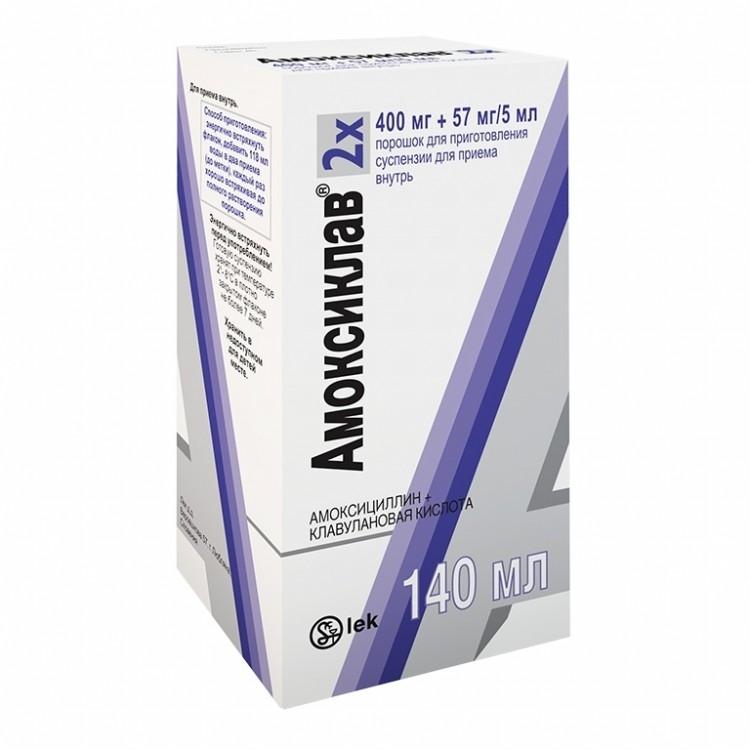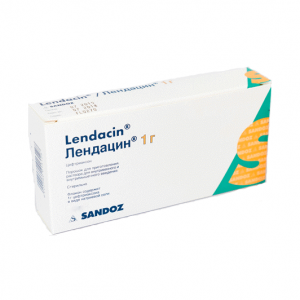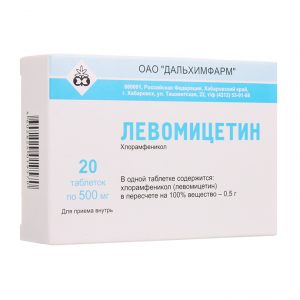Description
Pharmacological action of
AmoxiclavВ® is a combination of amoxicillin – semisynthetic penicillin with a wide spectrum of antibacterial activity and clavulanic acid – an irreversible inhibitor of -lactamase. Clavulanic acid forms a stable inactivated complex with these enzymesand ensures the stability of amoxicillin to the effects of -lactamases produced by microorganisms. Clavulanic acid, similar in structure to beta-lactam antibiotics, has a weak intrinsic antibacterial activity. AmoxiclavВ® has a wide spectrum of antibacterial action. It is active against strains sensitive to amoxicillin, including strains producing -Lactamases, including Gram-positive aerobic bacteria: Streptococcus pneumoniae, Streptococcus pyogenes, Streptococcus viridans, Streptococcus bovis, Staphylococcus aureus (except for methicillin-resistant strains), Staphylococcus epidermidis (except for methicillin-resistant strains), Lactobacillus spp. aerobic gram-negative bacteria: Bordetella pertussis, Brucella spp., Campylobacter jejuni, Escherichia coli, Gardnerella vaginalis, Haemophilus influenzae, Haemophilus ducreyi, Klebsiella spp., Moraxella catarrhalis, Neisseria gonorrhoeae, Neisseria meningitidis, Pasteurella multocida, Proteus spp., Salmonella spp. bacteria: Peptococcus spp., Peptostreptococcus spp., Clostridium spp., Actinomyces israelii, Fusobacterium spp., Prevotella spp., gram-negative anaerobes: Bacteroides spp.
Indications
Infections caused by susceptible strains of microorganisms:
infections of the upper respiratory tract and ENT organs (including acute and chronic sinusitis, acute and chronic otitis media, pharyngeal abscess, tonsillitis, pharyngitis)
infection of the lower respiratory tract (including acute bronchitis with bacterial superinfection, chronic bronchitis, pneumonia)
urinary tract infections
gynecological infections
infections of the skin and soft tissues, including animal and human bites
bone and connective tissue
biliary tract infection (cholecystitis, cholangitis)
odontogenic infection.
Contraindications
Hypersensitivity to any of the components of the drug hypersensitivity to penicillins, cephalosporins and other beta-lactam antibiotics history of cholestatic jaundice and / or other liver dysfunctions caused by clavic acid lymphoma amyloxin amyloxin amyloxin . With caution, you should use the drug with a history of pseudomembranous colitis, with liver failure, severe renal impairment, as well as during lactation.
Special instructions
During the course of treatment, the functions of the hematopoietic organs, liver and kidneys should be monitored. In patients with severe impaired renal function, an adequate correction of the dosing regimen or an increase in the interval between dosing is required. In order to reduce the risk of adverse reactions from the gastrointestinal tract, the drug should be taken with meals. Laboratory tests: high concentrations of amoxicillin give a false-positive reaction to urine glucose when using Benedict’s reagent or Felling’s solution. Enzymatic reactions with glucosidase are recommended. Influence on the ability to drive vehicles and control mechanisms There is no data on the negative effect of Amoxiclav in recommended doses on the ability to drive a car or work with mechanisms.
Composition
5 ml of finished suspension. contains: Active substances: amoxicillin (in the form of trihydrate) 400 mg, clavulanic acid (in the form of potassium salt) 57 mg.
Excipients: anhydrous citric acid, anhydrous sodium citrate, microcrystalline cellulose, carmellose sodium, xanthan gum, colloidal silicon dioxide, silicon dioxide, sodium saccharinate, mannitol, flavorings (strawberry, wild cherry, citric).
Dosage and Administration
Inside.from the severity of the infection and make up 25-45 mg / kg body weight / day (in terms of amoxicillin), divided into 2 doses.
To facilitate proper dosing, a 400 mg + 57 mg / 5 ml suspension pipette is inserted into each package of a suspension, graduated simultaneously in 1, 2, 3, 4, 5 ml and 4 equal parts.
Recommended dose of suspension depending on the body weight of the child and the severity of the infection.
Powder for suspension 400 mg + 57 mg / 5 ml: shake the bottle vigorously, add 59 ml of water (up to the mark) in two doses, each time shaking well until the powder is completely dissolved.
Side effects
Side effects in most cases are mild and transient. From the digestive system: loss of appetite, nausea, vomiting, diarrhea rarely – abdominal pain, impaired liver function, increased activity of liver enzymes (ALT or AST) in isolated cases – cholestatic jaundice, hepatitis, pseudomembranous colitis. Allergic reactions: itching, urticaria, erythematous rash rarely – multiforme exudative erythema, angioedema, anaphylactic shock, allergic vasculitis in isolated cases – exfoliative dermatitis, Stevens-Johnson syndrome, acute generalized exanthematous pustulosis. From the hemopoietic system and the lymphatic system: rarely – reversible leukopenia (including neutropenia), thrombocytopenia very rarely – hemolytic anemia, reversible increase in prothrombin time (when combined with anticoagulants), eosinophilia, pancytopenia. From the nervous system: dizziness, headache is very rare – convulsions (can occur in patients with impaired renal function when taking the drug in high doses), hyperactivity, anxiety, insomnia. From the urinary system: very rarely – interstitial nephritis, crystalluria. Other: rarely – the development of superinfection (including candidiasis).
Overdose
There are no reports of fatal or life-threatening side effects due to an overdose of the drug. Symptoms: in most cases – gastrointestinal tract disorders (abdominal pain, diarrhea, vomiting), anxious agitation, insomnia, dizziness in isolated cases – convulsive seizures are also possible. Treatment: the patient should be under medical supervision symptomatic therapy. In the case of recent administration of the drug (less than 4 hours), it is necessary to wash the stomach and prescribe activated charcoal to reduce the absorption of the drug. Amoxicillin / potassium clavunate is removed by hemodialysis.
Active ingredient
Amoxicillin, Clavulanic acid
pharmacy terms and conditions for prescription
Dosage form
uspenzyya for pryema inside
Appointment
For children 15 years and older, For children, Detyam on purpose doctor
Indications
Periodontitis, Inflammation of the lungs, Bronchitis, Sore throat, Otitis, Osteomyelitis, Sinusitis, urinary tract infections




